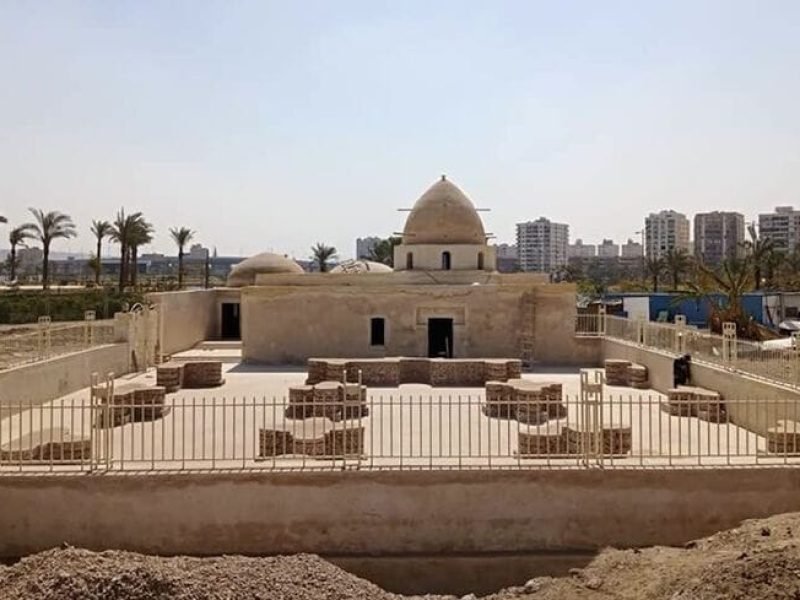THE IKHSHIDS
The Ikhshidid dynasty was a dynasty of Turkish mamluk origin, who ruled Egypt and the Levant from 935 to 969. The dynasty carried the Arabic title “Wāli” reflecting their position as governors on behalf of the Abbasids. The Ikhshidids came to an end when the Fatimid army conquered Fustat in 969. Muhammad ibn Tughj al-Ikhshid, a Turkish mamluk soldier, was appointed governor by the Abbasid Caliph al-Radi.
The Ikhshidid family tomb was in Jerusalem.
Origin of the name
The name “Ikhshidid” comes from the Central Asian dynastic name Ikhshid, a nobiliary title whose prestige in Central Asia remained high as late as the 10th century. It was adopted by the Turkic commander and ruler of Egypt Muhammad ibn Tughj, whose grandfather had come from Ferghana. After this title, the short-lived dynasty founded by Muhammad al-Ikhshid is known as the Ikhshidid dynasty.
THE IKHSHIDS Founding
The creation of the Ikhshidid state was part of the wider disintegration and decentralisation of the Abbasids after the Anarchy at Samarra, whereupon government became more decentralised. The founder, Muhammad ibn Tughj al-Ikhshid, possessed some form of military power and was on friendly relations with Mu’nis al-Muzaffar, a powerful military leader. Before he was appointed to Fustat he held the post of governor of Damascus.
He was first appointed to the post of Governor of Egypt in 933 but did not enter it during the first stint. In 935 he was appointed a second time to the governorship whilst the country was in a state of war with multiple factions. He launched a campaign to conquer Egypt by land and sea, the naval forces taking Tinnis and able to outflank Ahmad ibn Kayghalagh, the main opponent, forcing his retreat and facilitating ibn Tughj’s subsequent entry to Fustat in August.
The Fatimids were a major threat at the time and considerable effort was put into repelling them, culminating in their defeat by Ubayd Allah, ibn Tughj’s brother, by November 936. There was remarkable stability in the early years, with an absence of economic chaos and Bedouin raids, coupled with prohibition of looting, which helped pacify Egypt. Ibn Tughj sought the honorific title (laqab) of Al-Ikhshīd, which means “King of the Farghanians”, from the Abbasids and official designation arrived in July 939.
THE IKHSHIDS Consolidation
took over Syria in 939, which threatened Egypt. Enraged, ibn Tughj threatened to recognise the Fatimids, the Abbasids’ enemy as the Abbasid caliph did not formally declare for ibn Tughj, the de jure governor. Nonetheless, his simple goals resulted in mainly defensive actions and eventually came to terms with ibn Ra’iq where ibn Tughj would continue to have Egypt and the same for ibn Ra’iq in Syria, partitioned along Ramla-Tiberias. In 944, the governorships of Egypt, Syria and Hijaz were awarded for 30 years to ibn Tughj’s family, and these posts would pass to his son, Abu’l-Qasim. In 942 he began striking coins in his own name, and the changes of power in Baghdad meant less central authority. In 945 he defeated Sayf al-Dawla, another adversary who took over Damascus, which resulted in a truce until his death in 946.
THE IKHSHIDS
Abu’l-Qasim inherited the conflict with Sayf al-Dawla and fought him at Damascus, and al-Dawla soon occupied Aleppo in 947. There was a simultaneous revolt by Ghabun, governor of Middle Egypt, who managed to occupy Fustat before his death in the same year. Nonetheless, Kafur’s continuation of the appeasement policy managed to negotiate a settlement between the Ikhshidids and the Hamdanids where Damascus became Egyptian again and the tribute to the Hamdanids stopped, with borders largely in line with status quo ante bellum. This peace practically settled the Ikhshidid borders and left the Fatimids again as the main threat, with the Byzantines now the responsibility of the Hamdanids. Kafur wielded real authority following ibn Tughj’s death in 946 and was highly regarded among contemporaries.





Comment (0)